Write Us
We are just a call away
[ LET’S TALK AI ]
X
Discover AI-
Powered Solutions
Get ready to explore cutting-edge AI technologies that can transform your workflow!


The significance of using digital tools in the construction process has increased significantly challenging the need for the development of a more sophisticated construction management program like Procore. The findings highlighted how application of these digital solutions assists organizations in managing project work efficiently, increasing the speed of executing tasks as well as enhancing communication between different stages of projects.
Procore was founded during the first wave of SaaS in the construction industry, and as the industry adopts digital solutions, understanding the app development process of a and construction management software cost like Procore is critical for new entrants. The overall construction management software cost of creating a technological product could easily reach up to 50000 USD or more depending on the kind of technology and the software that is being developed.
Such planning to construct an application to manage construction for custom construction projects affirms the market significance. As per a report, the global construction management software market has been expected to reach $ 9. According to the recent figures, the total of mobile payments amounted to 73 billion in 2024 to $ 15. Approximately, the global remote patient monitoring market would reach $ 20 billion by 2029, at the CAGR of about 9 %. 33%. This shows the rapid growth of the market size which is evident that there is strong demand for such services and staking the high return on investment in this particular sector.
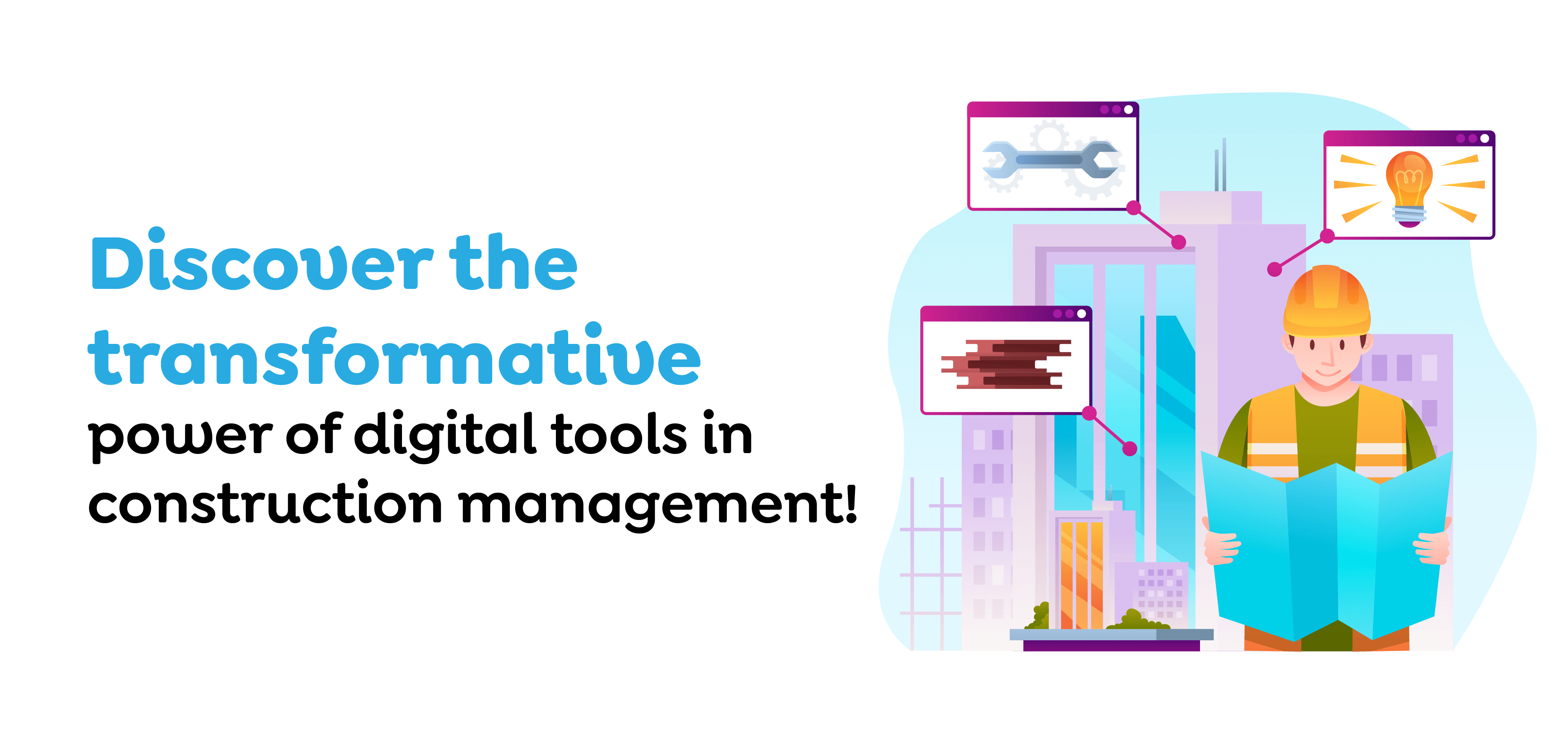
A mobile app development company seeks to harness technology in the bid to cut construction projects and improve operational productivity. As a business seeking such information about the cost of development of construction management software, this is an essential read.
First, let’s discuss Procore’s tendency of becoming a trendsetting company in the industry and serving as a pattern for others to follow.
After knowing the construction management software cost, let’s look at the whole development process!
Construction management software fundamentally transforms project execution, streamlining operations from inception to completion. These latest technologies not only enhance project oversight but also significantly improves communication and operational efficiency, making it an indispensable tool in modern construction management.
The benefits of such software are clearly demonstrated by industry leaders like Procore, which has reported a remarkable 33% year-over-year revenue increase to $248 million and expanded its customer base to 16,067 users.
Entrepreneurs looking to build software like Procore are strategically positioning themselves in a profitable niche, appealing to a wide range of professionals in the construction industry. This strategic move not only forecasts business growth but also addresses the growing demand for innovative construction solutions. The success of Procore, highlighted by its robust financial performance, illustrates the profound impact and market demand for such platforms.
Therefore, developing software like Procore represents a forward-looking investment, offering promising returns and a competitive advantage in the rapidly evolving construction technology sector. The benefits of construction management software, underscored by proven market success, make it a highly worthwhile venture for ambitious people and a guide for entrepreneurs.
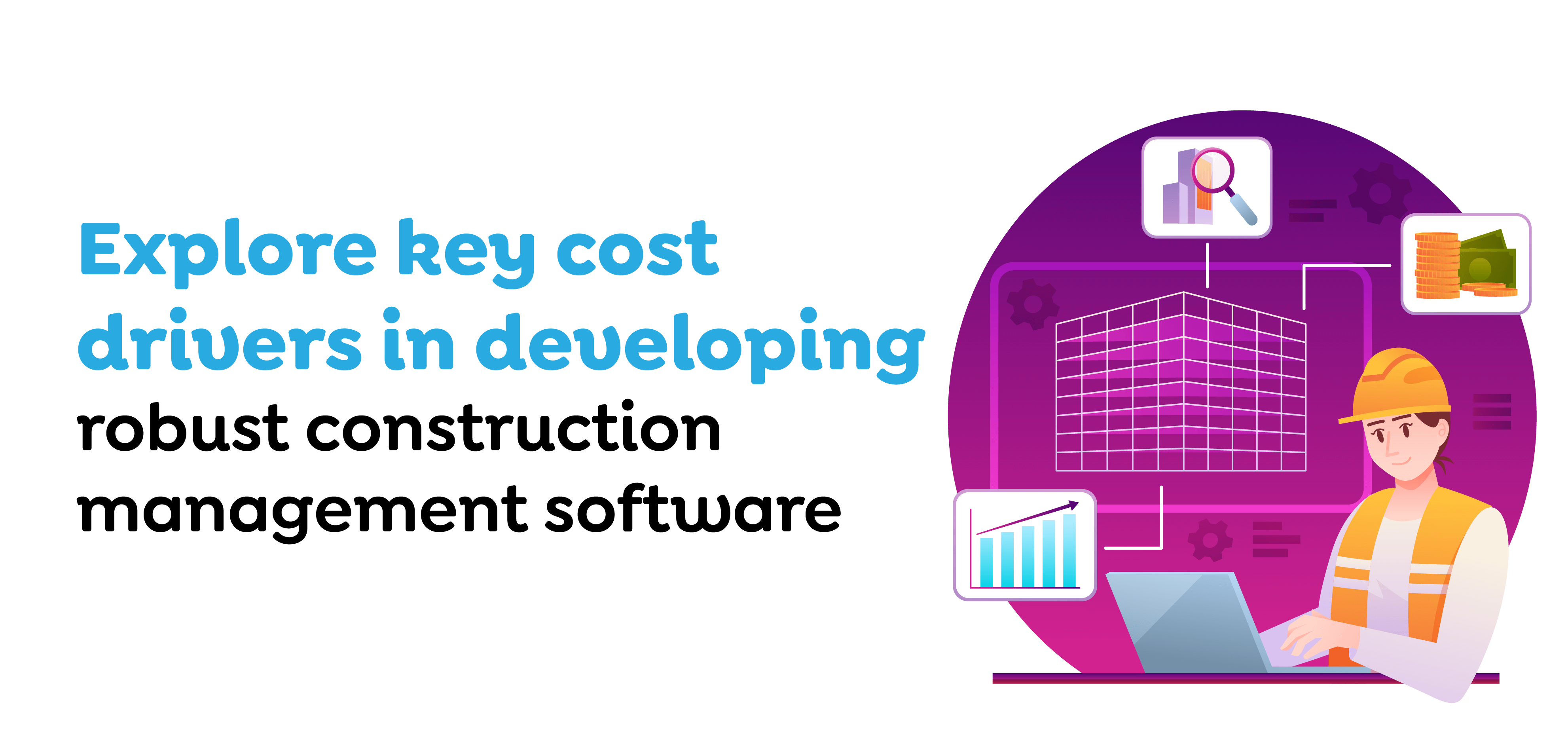
Estimating the construction management app development cost involves considering several key factors. These include the complexity of the features, the choice of technology stack, and the experience level of an on-demand app development company. Here are the primary factors to consider:
The envisioned features and functionalities play a crucial role in shaping the project. Simple software focused on basic management tasks requires less investment. However, as the complexity increases, integrating advanced features such as analytics or real-time collaboration tools significantly raises the budget.
Customizations specific to construction processes or regulatory compliance further influence expenses. Additionally, incorporating cutting-edge technologies like AI analytics or IoT for onsite equipment tracking also affects the cost. Ultimately, the scope defined at the project’s inception sets the foundation for the financial and resource allocation throughout the development phase.
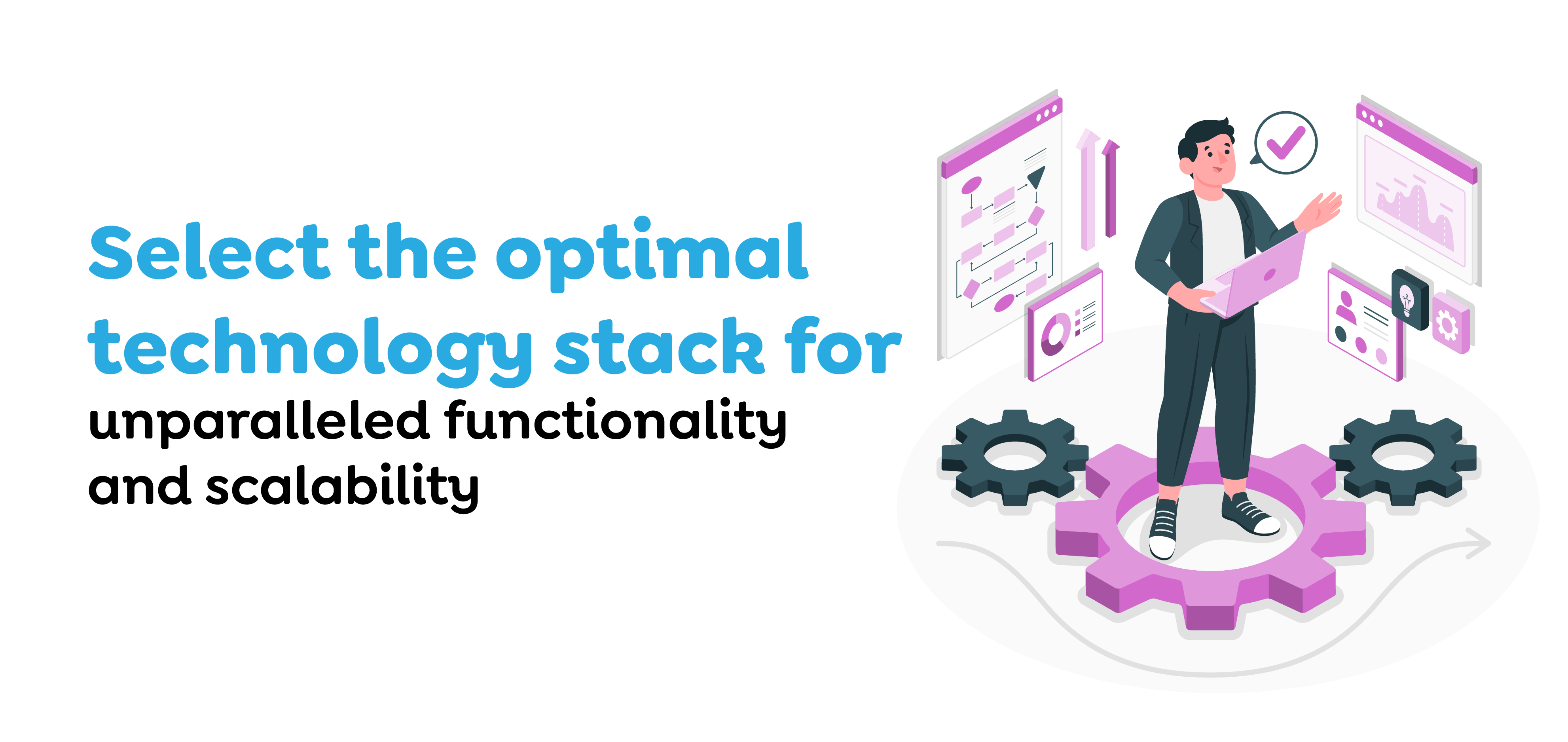
Selecting the right technology stack is crucial for the success of software development. It affects functionality, scalability, and user satisfaction. The cost to develop construction management software like Procore varies based on whether you choose native, web, or platforms like (multi cloud vs hybrid cloud). Native software, while more performant and secure, can increase development costs due to platform specificity.
Web technologies offer broader access at potentially lower costs but may lack advanced features. Hybrid solutions balance cost and functionality, reaching a wider audience without requiring separate codebases.
Additionally, choosing between cloud-based and on-premise solutions significantly influences scalability and operational flexibility. Cloud solutions typically provide better flexibility and scalability, easily adapting to changing project needs with minimal initial costs. Conversely, on-premise solutions offer more control over data storage but involve more complex infrastructure management.
The chosen technology impacts both upfront and long-term maintenance expenses, influencing the overall budget.
Effective data management involves organizing, storing, and safeguarding the vast amounts of information generated during construction projects. This is crucial for efficient project execution and compliance with regulatory standards. Implementing robust security protocols to protect sensitive data from unauthorized access and potential breaches adds to the complexity and cost of software development.
To enhance efficiency, construction management software must seamlessly integrate with existing systems such as ERP, accounting, and resource management tools. This often requires custom development to ensure full compatibility and functionality, which can expand the scope and cost of the project.
Scalability is crucial for construction management software to handle varying data volumes and support business growth over time. Investing in a flexible architecture and scalable technologies ensures your software can expand its capabilities without compromising performance or security, affecting both initial development costs and long-term maintenance.
Moreover, scalability positions your construction management software for seamless integration with emerging technologies and marketing trends, ensuring competitiveness. This proactive approach in software design enhances adaptability to future requirements and secures long-term returns on investment by minimizing the need for frequent upgrades.
User interface design – and, by the same token, web design – is one of the key factors of successful targeting since it helps to attract attention and provide easy usage of the web site. These factors dictate the way that people use the software and impact satisfaction and appreciation of the product. Subsequently, it would be incumbent on the stakeholders of the industry to employ high-quality interaction design in the software development process to attain good user interface and user experience across the spectrum of construction profiles that would use the developed software. As the design becomes complex and if the organization requires many unique graphical user interface (GUI) features, the cost for developing construction management software may rise.
It can effectively target a relatively narrow but more specific niche where simpler interfaces, additional options and uncomplicated navigation of users’ personal control panels would become major advantages. These investments drive up initial expenses, but have positive impacts on the longevity of the business due to increased customer loyalty and the lack of need for intensive training of employees.
The geographical location of your development team significantly influences the overall cost of developing software like Procore, as hourly development rates vary across different regions worldwide. One cost-effective strategy is to outsource software development to regions such as Asia, particularly India, which offers access to a skilled workforce proficient in the latest technologies.
The region’s emphasis on technological advancements ensures that developers have the necessary tools to create innovative, high-quality software products that comply with regulations. Outsourcing to these areas also provides access to cutting-edge methodologies, offering significant advantages in the global market.
After the launch, maintenance and support become crucial for the software’s reliability and longevity. Regular updates, bug fixes, and security patches are essential to keep the software competitive. The cost of developing construction management software like Procore includes these ongoing expenses, which can vary depending on the service agreement. Providing customer support through messaging, email, or phone also contributes to the costs.
Therefore, considering the above factors, the cost of developing software like Procore can range from $35,000 to $200,000. Continuous investment is required to adapt to new technologies or regulatory changes. Allocating funds for these aspects ensures the software remains functional, secure, and meets user expectations.
Essential Features of a Construction Management Software
In the development of construction management software, identifying core functionalities is paramount. These features are essential for ensuring the software effectively meets industry requirements. Here are the indispensable features of a software similar to Procore.
Also Read – How Much Does It Cost to Develop a Mobile App?

Efficient project management and scheduling are core functionalities of any construction management software. These features streamline workflows, ensuring projects progress as planned by allowing detailed planning of resources, timelines, and labor to enhance efficiency. With tools for task allocation and deadline tracking, teams can mitigate bottlenecks and improve productivity.
Procore’s intuitive software includes dashboards for quick project updates, aiding in prompt decision-making. Integration with calendars and email alerts keeps everyone informed of schedule changes and important milestones. Additionally, advanced scheduling options can predict delays and offer solutions to maintain project timelines.
Personalized reports help identify trends, forecast outcomes, and highlight areas needing attention. While incorporating these tools may affect the cost of developing construction management software, their value in optimizing project management and outcomes is unparalleled, offering a significant return on investment.
Document control and sharing play a crucial role in facilitating the flow of information in construction projects. These functionalities enable secure storage, easy retrieval, and efficient sharing of project documents. Centralized document management reduces the risk of data loss and enhances collaboration among team members, while version control ensures that everyone works from the latest plans, minimizing errors.
Access permissions ensure that sensitive information remains secure yet accessible to authorized personnel. The ability to swiftly share drawings, specifications, and reports further supports timely decision-making. Implementing these features is essential when developing software akin to Procore, as it ensures efficient and effective project delivery.
Efficient budget management and cost control are vital for ensuring the financial success of construction projects. These functionalities in software like Procore facilitate real-time tracking of expenses and budget allocations, offering a clear overview of financial status. Detailed cost reporting enables project managers to identify potential overruns early on, enabling timely adjustments.
Integration of procurement and invoicing processes streamlines payments and helps control costs. Customizable budget templates and financial dashboards provide insights into financial performance, enhancing decision-making. These tools are crucial for maintaining profitability, ensuring projects are completed within budget, and avoiding unexpected financial challenges.
Integrating AI-based predictive analytics can significantly improve construction project outcomes. This advanced feature utilizes data analysis to forecast project risks and opportunities, guiding strategic decision-making. By predicting potential delays, cost overruns, and resource shortages, AI tools enable proactive project management. These analytics also optimize scheduling and resource allocation, enhancing efficiency and productivity.
The incorporation of machine learning algorithms continuously refines predictions, enhancing accuracy over time. Although the cost of developing construction management software may increase with such sophisticated capabilities, the return on investment from improved project performance and risk mitigation can be substantial. This technology is revolutionizing the planning and execution of construction projects.
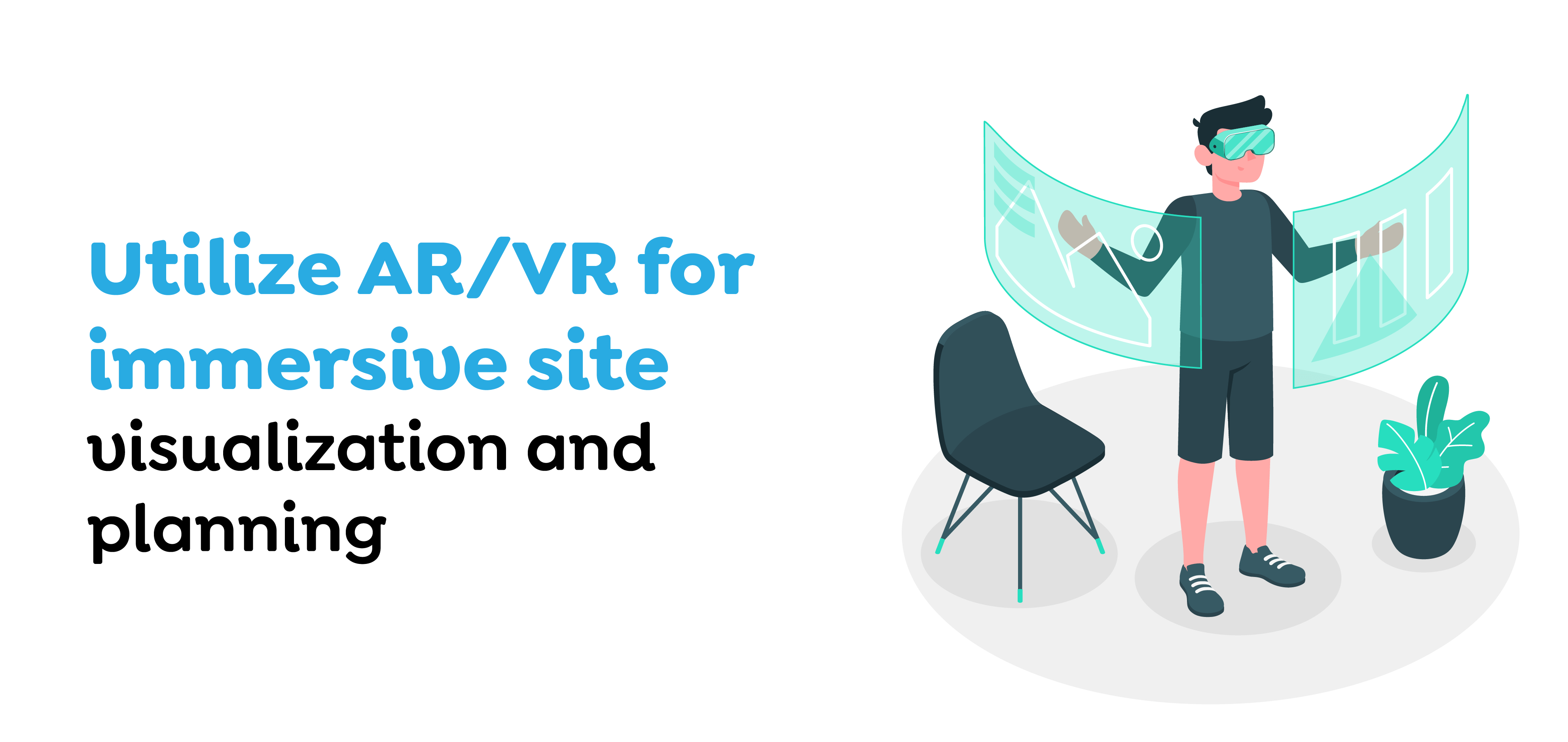
The introduction of AR/VR technology on construction management software incorporates virtual site visualization into the system. It allows various stakeholders to assess construction plans for particular projects in the virtual world before the construction starts, reducing the probability of misplans and occurrence of problems during the construction. This innovation makes it easier in decision making and offers a secure and reliable way for practicing on various techniques depending on the teams.
AR/VR technology can also help to build more impactful client presentations by providing clients with the realistic representation of what the outcome may look like. Although the use of AR/VR may augment the development cost of the construction management software because of the need for specialized skills and equipment, the end result in terms of precision, efficiency, effectiveness and overall client experience justify the costs incurred in enhancement of such features. All in all, this feature represents one of the most significant steps towards creating the future-proof management approaches for construction.
Mobile accessibility is vital for construction management software, providing flexibility and instant access to project data. It enables users to quickly update progress, identify issues, and share essential documents, promoting seamless collaboration. This capability greatly improves project management and responsiveness to challenges. Push notifications ensure stakeholders are kept informed about critical updates or changes.
Integrating mobile accessibility into software development, akin to Procore, requires careful design to ensure a seamless user experience across devices and platforms. It bridges the gap between office-based teams and field personnel, facilitating effective communication and project success.
Ensuring safety compliance and efficient reporting is crucial for construction projects. This feature assists in managing and documenting all safety protocols, minimizing risks and liabilities. It facilitates digital logging of incidents and safety meetings, simplifying compliance verification. Automated alerts for data breaches or unmet requirements improve proactive management. Integration of robust analytics allows for identifying trends in safety incidents, guiding preventive measures.
This focus on safety not only safeguards the workforce but also enhances the project’s overall efficiency. While incorporating these capabilities may impact the cost of developing construction management software, the investment is justified. It significantly reduces potential hazards and legal complications, highlighting its importance.
Real-time communication tools are essential for efficiently coordinating construction projects. They enable instant messaging, video conferencing, and live updates, ensuring teams stay aligned. These tools facilitate seamless communication among all project stakeholders, regardless of their location. By providing a platform for immediate feedback and decision-making, projects can progress without unnecessary delays.
The integration of these technologies promotes a collaborative environment, crucial for addressing challenges promptly. While implementing such features may impact the development cost of construction management software due to the requirement for reliable, scalable infrastructure, the investment enhances project management capabilities, proving indispensable for modern construction management solutions.
Efficient resource and inventory management are vital for optimizing project delivery and reducing waste. This functionality allows for precise tracking of materials, equipment, and labor across projects, ensuring efficient allocation of resources and preventing shortages or excesses. Real-time monitoring of inventory levels enables informed decision-making, with supplies ordered just in time.
Additionally, this feature supports budget management by providing insights into actual versus planned resource usage, while advanced analytics help identify trends and opportunities for cost savings. Integrating such capabilities into software development, similar to Procore, is essential. These tools are indispensable for maintaining control over project costs and schedules.
Incorporating these features into construction management software development can create a comprehensive solution that addresses the diverse needs of the construction industry.
Construction management and revit architecture software involves a complex, multi-step process that demands meticulous planning and execution. Each phase of the software development process, akin to Procore, plays a unique role in ensuring the success of the final product. Let’s delve into the stages in detail below:
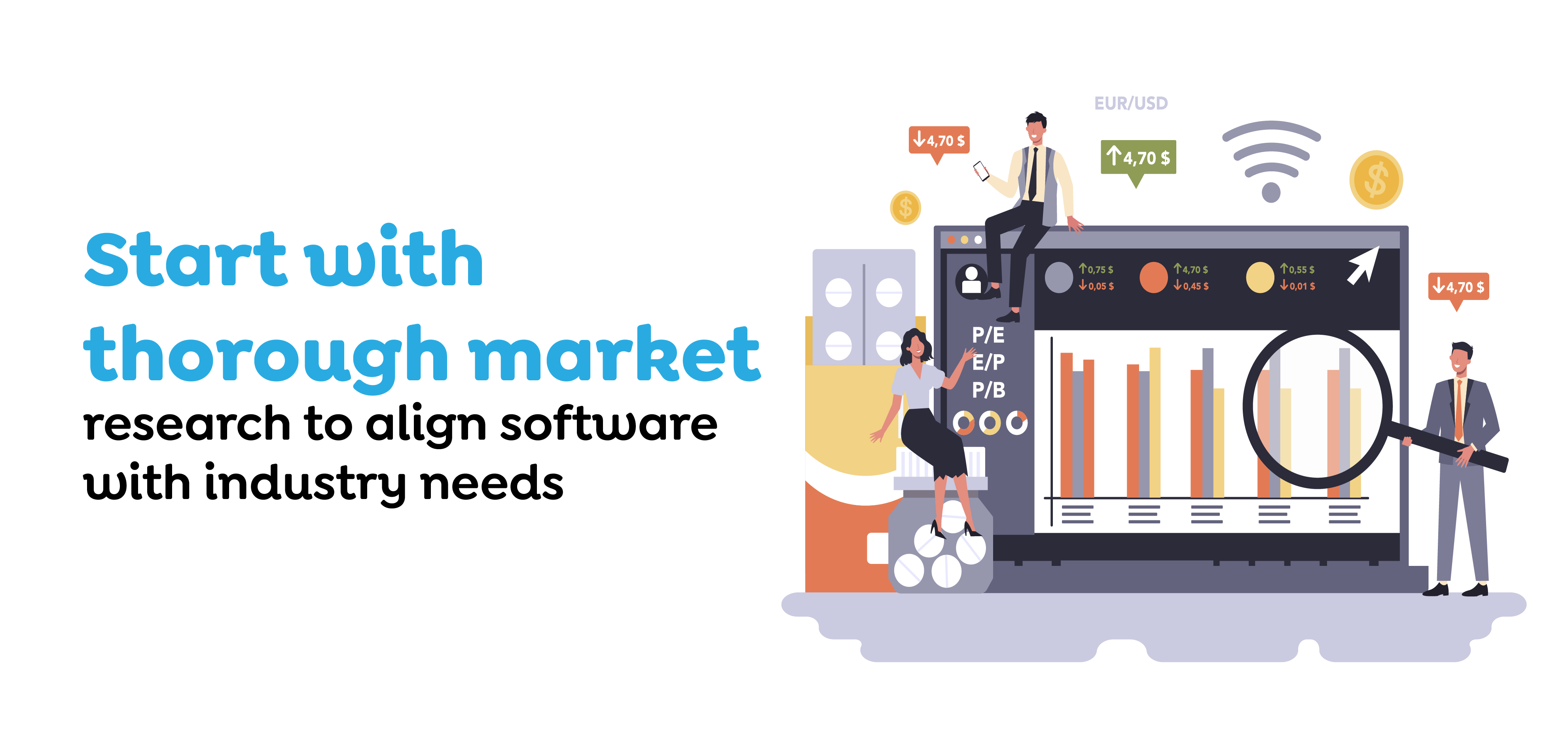
Comprehending the market and user needs is pivotal for delineating the project scope and customizing the development of construction management software. This initial phase entails scrutinizing the market to pinpoint gaps and opportunities within the construction sector, along with collecting user feedback to identify unique features.
These insights serve as the bedrock, ensuring that the product aligns with actual industry requirements. Moreover, market research and needs analysis not only steer the development trajectory but also inform design choices throughout the development journey.
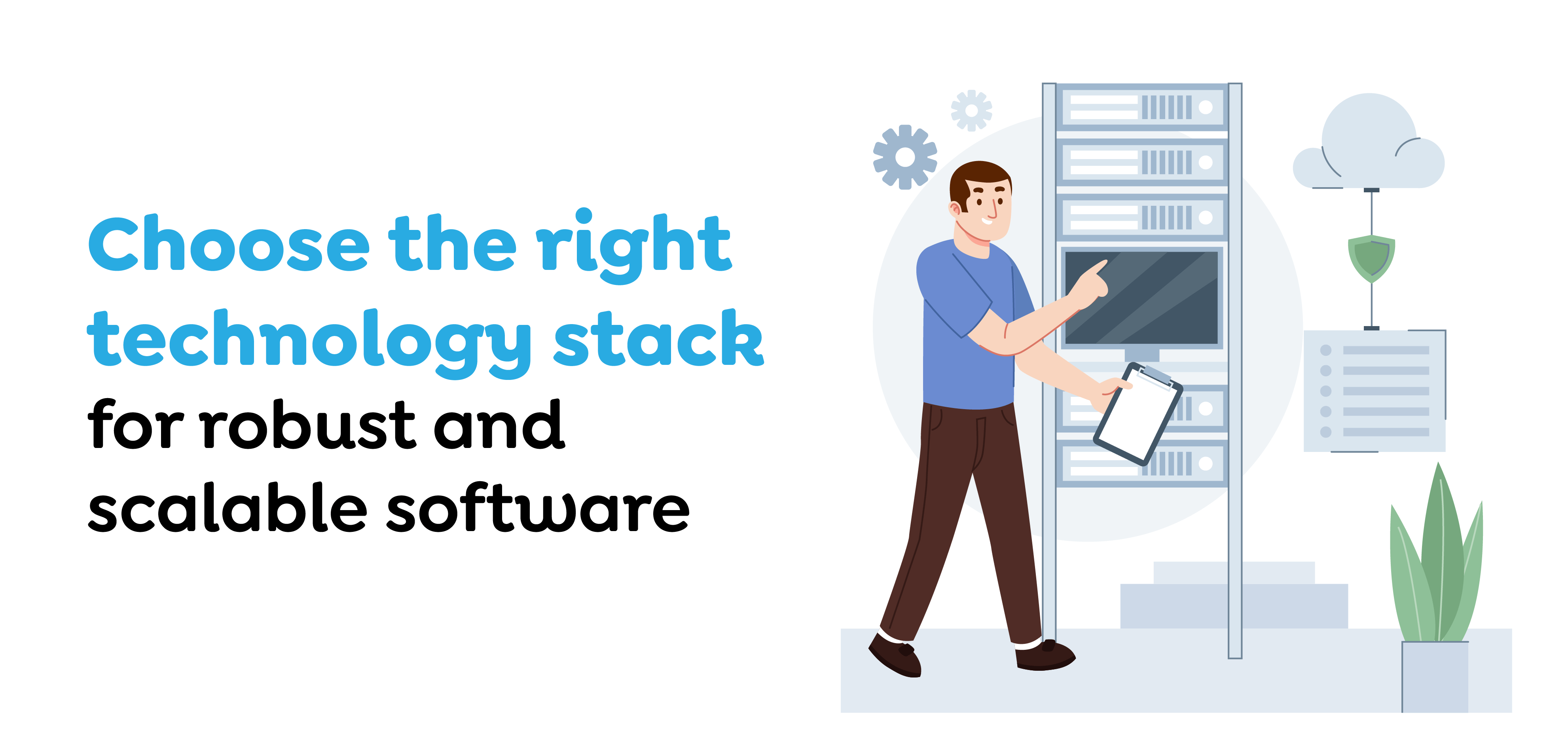
Choosing the right technology stack is a pivotal aspect of the software development process, influencing functionality, scalability, and future maintenance. Decisions regarding native, hybrid, or web platforms significantly impact user experience and accessibility. Additionally, factors such as team proficiency, project timeline, and security needs play a crucial role in this selection.
The chosen technology stack also directly impacts the cost of developing construction management software, as it entails varying resource and licensing fees. While embracing cutting-edge technologies can provide competitive advantages, it may necessitate higher investment. Thoughtful deliberation ensures the software’s robustness, efficiency, and ability to meet industry requirements. Striking a balance among these factors is essential for successful software development.
Crafting user experience (UX) is integral to ensuring the software is intuitive and user-friendly. A meticulously planned UX design enhances user satisfaction and engagement, involving the creation of wireframes and prototypes to visualize the user journey. Feedback from potential users during this phase is invaluable, guiding refinements to better align the software with user needs. Accessibility and ease of use take precedence.
Designing for diverse users ensures the software caters to various skill levels, a crucial step when aspiring to create software akin to Procore. Effective UX design can significantly influence adoption rates and overall software success, laying a solid foundation for a user-centric development process.
The development phase is pivotal as it transforms design concepts into a functional software, requiring dedicated time and skilled developers. This stage focuses on coding the core functionalities and user interface, with the integration of advanced technologies like AI and AR/VR significantly enhancing software capabilities. Moreover, collaboration between front-end and back-end developers is vital for seamless integration.
Adopting agile methodologies for software development ensures flexibility and efficiency throughout the development process. The cost of constructing a construction management software like Procore is significantly influenced at this stage, yet it remains one of the most foundational steps in software development, bringing the project vision to fruition.
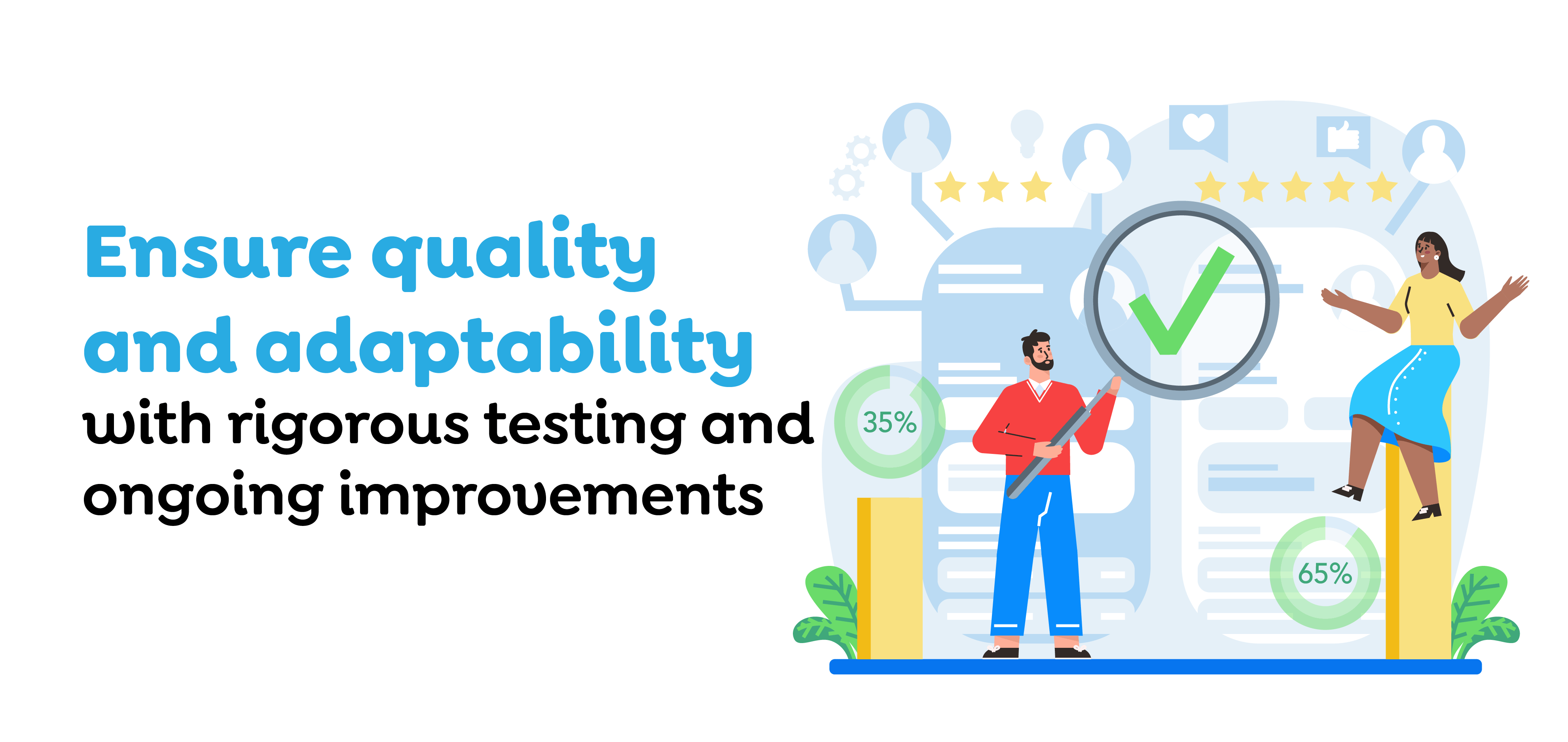
The development process of construction management software involves thorough testing to verify the software’s overall functionality. Testing ensures the software is dependable, secure, and user-friendly before its market release.
Upon successful completion of testing, the software is deployed in the designated environment, making it accessible to users. Additionally, post-launch, continuous improvement is essential for maintaining competitiveness, with user feedback guiding necessary updates and enhancements. This iterative approach is critical for adapting to market demands and sustaining relevance.
It’s crucial to recognize that a commitment to ongoing maintenance and support post-deployment lays the foundation for a successful software that simplifies operations and is user-friendly. This approach is pivotal when endeavoring to create software like Procore, as it ensures the software remains pertinent and valuable to users. Furthermore, it guarantees the development of a comprehensive solution that meets industry needs and user expectations, reflecting the software’s quality and effectiveness.
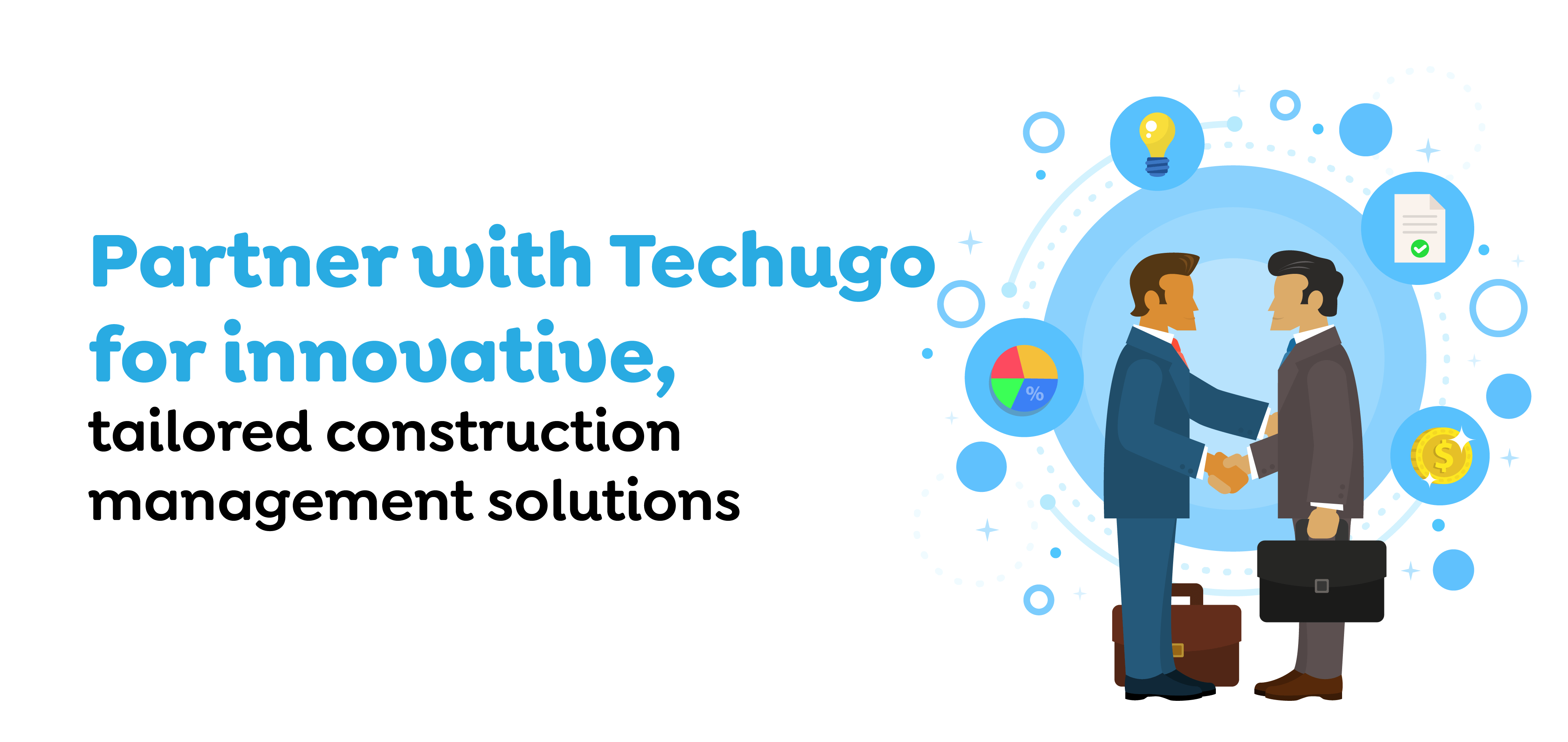
At Techugo, we excel in revolutionizing construction management through innovative, customized software solutions. Our proficiency in providing construction management software development services empowers us to craft robust software tailored to your business’s unique requirements. By harnessing the latest technologies, we guarantee that your software enhances project efficiency, facilitates informed decision-making, and optimizes operations.
Techugo, as a leading software development company in USA, our agile development approach entails close collaboration with clients to ensure their vision is fully realized. With a strong emphasis on user experience, our services are crafted to deliver intuitive and accessible software, empowering users to maximize productivity.
Get in touch with our experts today to elevate your construction management practices with cutting-edge software and mobile applications.
Write Us
sales@techugo.comOr fill this form